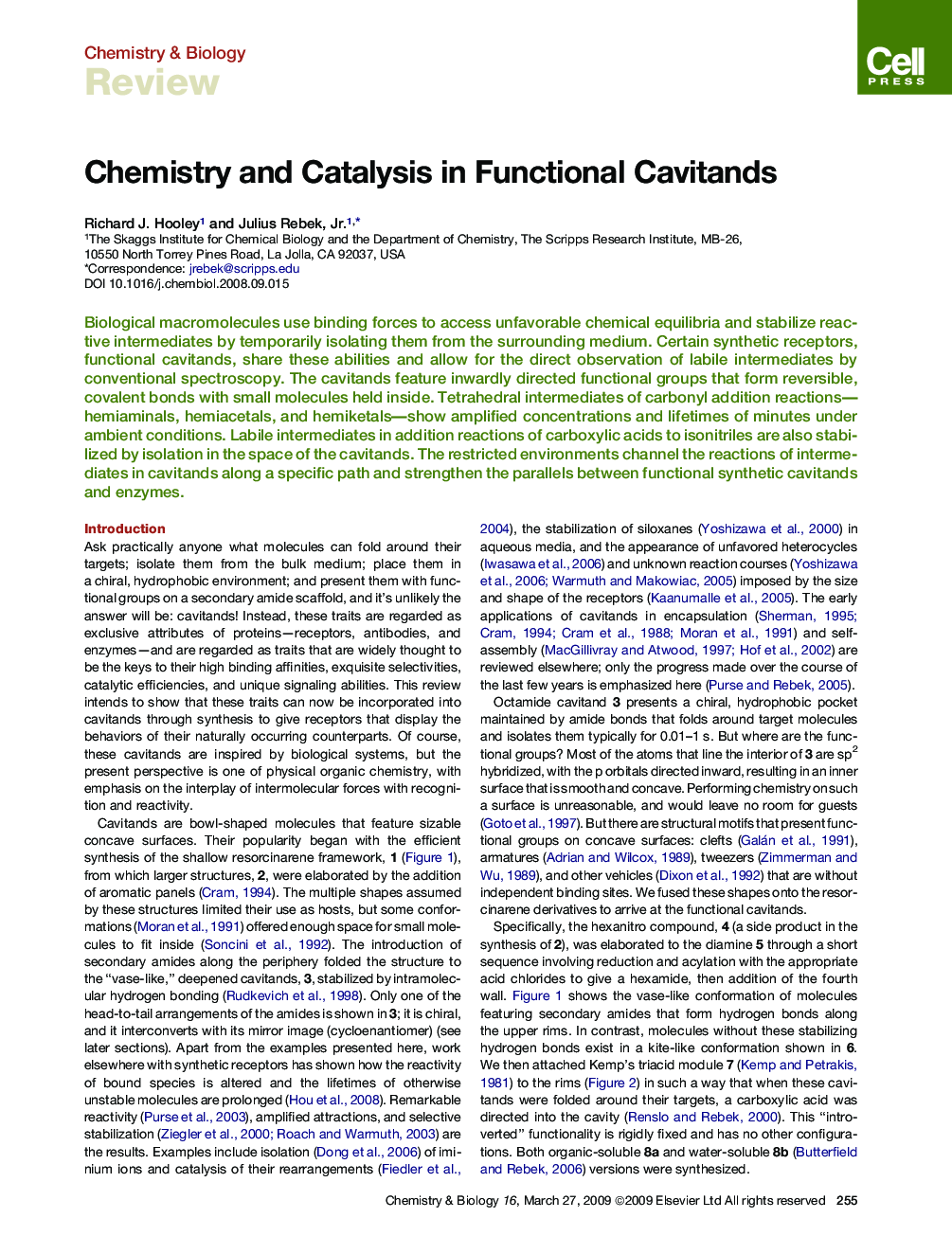| Article ID | Journal | Published Year | Pages | File Type |
|---|---|---|---|---|
| 1393940 | Chemistry & Biology | 2009 | 10 Pages |
Biological macromolecules use binding forces to access unfavorable chemical equilibria and stabilize reactive intermediates by temporarily isolating them from the surrounding medium. Certain synthetic receptors, functional cavitands, share these abilities and allow for the direct observation of labile intermediates by conventional spectroscopy. The cavitands feature inwardly directed functional groups that form reversible, covalent bonds with small molecules held inside. Tetrahedral intermediates of carbonyl addition reactions—hemiaminals, hemiacetals, and hemiketals—show amplified concentrations and lifetimes of minutes under ambient conditions. Labile intermediates in addition reactions of carboxylic acids to isonitriles are also stabilized by isolation in the space of the cavitands. The restricted environments channel the reactions of intermediates in cavitands along a specific path and strengthen the parallels between functional synthetic cavitands and enzymes.
